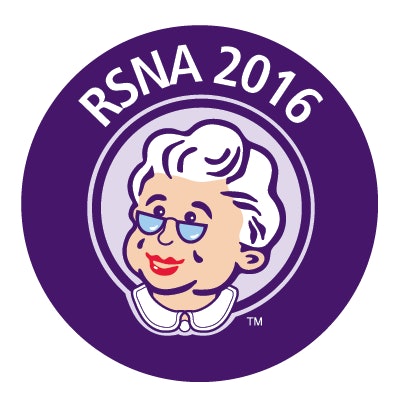
It's a digital age, and radiology has some important experiences to share as the healthcare enterprise continues to integrate technology into the practice of medicine, Dr. Robert Wachter, chair of the department of medicine at the University of California, San Francisco, told attendees at the opening session of RSNA 2016 in Chicago.
It's not an easy process, in part because it can be difficult to characterize the benefits and harms technology can bring, he said. Radiologists may be uniquely positioned to offer insights, however.
"In the last five years, we've taken the most information-intensive industry ever invented -- healthcare -- from a paper-based endeavor to a digital one," he said. "But radiology went digital 15 years ago, with the advent of PACS. Radiology's experience offers good lessons for the rest of us."
Tech's pros and cons
In 2015, Wachter published a book titled The Digital Doctor: Hope, Hype, and Harm at the Dawn of Medicine's Computer Age, which examined healthcare's conversion to digital technology and the effect of the transition on patient care. His interest in the digitization of healthcare came in part from his years of working on patient safety issues and the errors he saw, even in completely digital medical environments.
"At my institution, a 16-year-old kid was supposed to receive two Septra pills, one twice a day," he said. "But because of an error -- in a completely wired environment -- he was given 39 pills at once. He did not die; he had a grand mal seizure, and I'm sure he'll never have a urinary tract infection for the rest of his life. But it was a terrible example of how technology has changed everything, and not always for the better."
So what makes integrating technology so tricky? The problem is twofold, Wachter said. First -- again, with the exception of radiology -- healthcare's shift from a paper-based endeavor to a digital one has happened quickly. For example, in 2009, one in 10 hospitals had electronic health records; in 2016, more than 90% do. But second, and perhaps more intractable, is that it's easy for healthcare providers and administrators to assume that the digitization process is simply a technical task, when in fact it's much more than that.
"We've treated technology in medicine as if it can be handled as a straightforward technical change: You follow the instructions, and it's all good," he said. "But in fact it's an adaptive change, one that requires people to alter their understanding about their work and how they do it."
Radiology has some cautionary tales to share in this regard, he said. Once PACS digitized film, social relationships and communication patterns that depended on gathering in the reading room withered -- opening the door to some of the issues radiologists are concerned about today, such as commoditization of their services.
"When PACS arrived, films left the building," Wachter said. He described how one of the foundational experiences of his residency had been radiology rounds, because of what he learned from one of the attendings there. After PACS was instituted, those rounds stopped.
"Did anyone think about the possibility that once we started using PACS, the medical, surgical, ICU teams would stop going down to look at their films?" he said "It seems that we aren't capable of imagining how technology will affect us until we're actually living with it."
The Golden Spike
Not only is the adoption of technology misunderstood as a technical task rather than an adaptive one, it's also assumed that implementing it will immediately result in improvement. Not necessarily, Wachter said. He outlined four stages of healthcare IT adoption:
- Digitizing the product (the medical record and film)
- Connecting this digital information across various enterprises
- Taking meaningful insights from the data
- Converting these insights into actions that improve healthcare value
Medicine is definitely in the beginning stage, he said.
"We've digitized the medical record, for example, and made it available, but we have yet to convert the insights of the digitized information into action that improves the value of the services we provide," he said. "We can be brilliant about the technical piece, but building technical advances into workflow patterns that actually change medical practice is harder."
What's missing is the proverbial Golden Spike on the healthcare railroad, Wachter said. In 2009, the Health Information Technology for Economic and Clinical Health (HITECH) Act funneled more than $30 billion into healthcare for the purpose of digitizing it. This initiative built one set of "tracks," and it also prompted fresh interest from Silicon Valley in healthcare applications, which created a second set. But these two tracks remain disconnected.
"Right now, those two tracks -- digitization and implementation -- don't connect," he said. "We need that Golden Spike."
Connecting them will unlock what U.S. economist Robert Solow called the "productivity paradox," Wachter said: Information technology appears, but it is not immediately integrated into real life until it improves and the whole task it is meant to address is reframed.
"We have to reimagine the work the technology is supposed to help us do, not just digitize the process," he said.
Reimagine the work
What can radiology do as this paradox is resolved? Get clear on the new reality, and reframe exactly what it is that radiology offers, according to Wachter.
"Recognize that the monopoly radiologists had over imaging when film was in the reading room has ended," he said. "Recognize that there's risk of commodification, of replacement of your skills and services with cheaper alternatives like teleradiology. So, what do you do? You demonstrate your value, not only through interpersonal relationships, but also in the research domain. Reimagine the work. Ask yourself: What might radiology rounds look like today? And through research, show that the value of providing accurate readings leads to better, safer patient care."




















